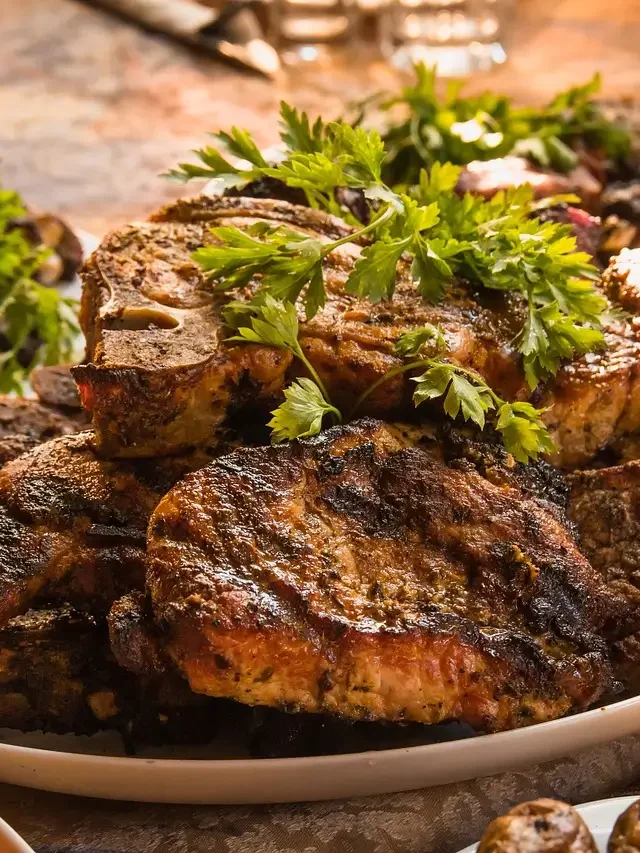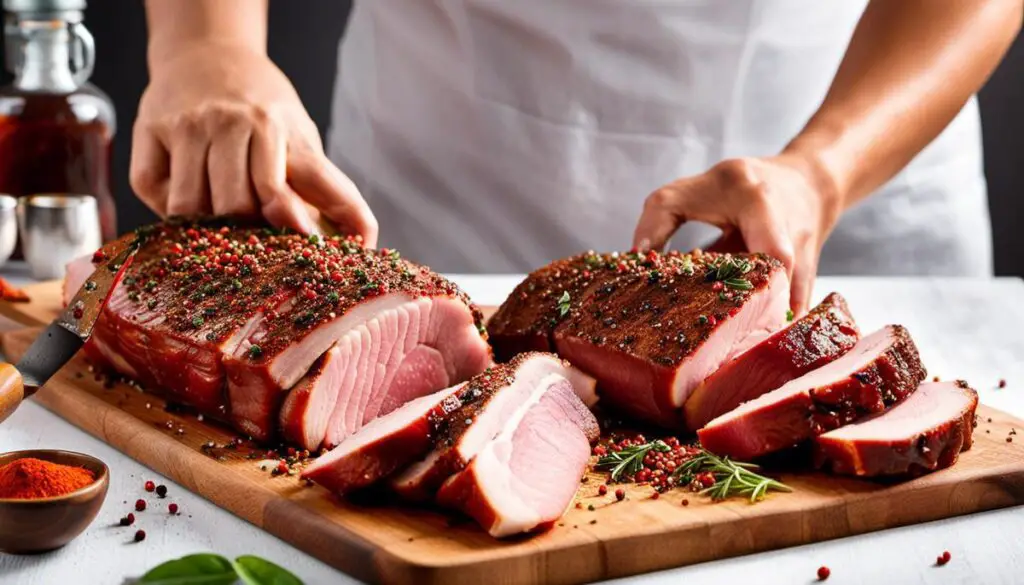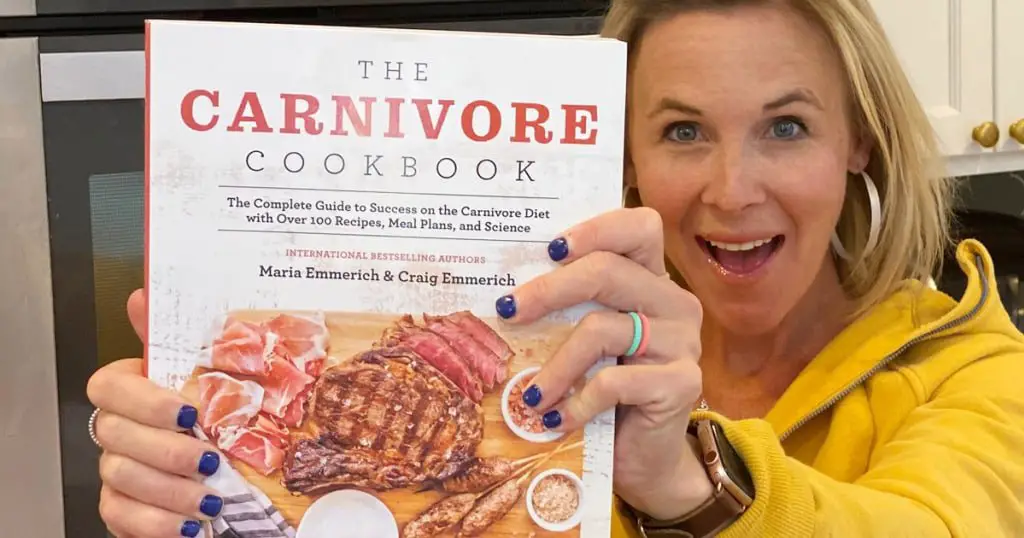Delving into the culinary world of flavor enhancement, we take aim at the enticing art of crafting a classic pork rub. A star player in the realm of grilling and roasting, a pork rub is more than just a seasoning – it’s a passport to a myriad of mouthwatering flavors, a melting pot of sugar, salt, herbs, and spices designed specifically to draw out and augment the natural potencies of pork. In this journey towards gastronomic excellence, the importance of understanding the fundamental aspects of pork rubs, the choice of suitable ingredients, the process of making a brilliantly balanced rub, and the tricks to a successful application and cooking cannot be overstated.
Understanding the Basics
Understanding Pork Rubs and Their Usage
A pork rub is a combination of various seasonings that are used to enhance the flavor of pork before it gets roasted or grilled. This mixture is ‘rubbed’ onto the surface of the meat, allowing the flavors to penetrate deeply, leading to a more flavorful and aromatic dish. Beyond just flavor, the pork rub also serves the purpose of creating a tasty crust on the surface of the pork when it’s cooked, which adds to its visual appeal and provides an additional texture. A good rub can balance out flavors, adding a kick of spice, a touch of sweetness, or a hint of smokiness, depending on the spices or herbs used.
Exploring Common Ingredients in Pork Rubs
The ingredients for a pork rub can greatly vary, encompassing a wide range of flavors. But there are some common elements that many pork rubs have. A typical rub mixture might contain elements of sweetness, saltiness, spiciness, and a hint of tanginess to round things off.
Sugar is a common ingredient as it helps to create a caramelized outer layer on the pork as it cooks. Brown sugar is often used, giving the rub a deeper, more complex sweetness than plain white sugar.
Salt, another staple component, is essential to bring out and enhance the natural flavor of the pork.
Other ingredients include herbs like thyme, rosemary, oregano, and spices such as garlic powder, onion powder, and ground black pepper. Paprika is also commonly used for its smoky notes and bright color. Some rubs might also include stronger, more potent flavors like cayenne pepper or chili powder.
With this understanding of what a pork rub is, you can experiment with your own concoctions, making sure to balance out the flavors to suit your personal palate. A basic rule of thumb is starting with equal parts of sugar, salt, and your choice of herbs and spices and then adjusting to taste. Always remember to rub the mixture thoroughly into the meat, covering all areas and pressing it into the surface to ensure it sticks. With this knowledge, you can create a flavorful and appetizing crust on your next roasted or grilled pork dish.

Choosing Ingredients
Choosing Ingredients for Your Pork Rub
The first step in crafting your perfect pork rub is picking the ingredients that align with your desired flavor profile. Common ingredients for a basic rub include sugar, salt, pepper, paprika, and cayenne. Sugar is typically used to help create a delicious caramelization on the meat, while salt not only flavors the pork, but also assists in retaining moisture. Pepper adds a spicy note, paprika gives a smoky kick, and cayenne brings a fiery heat.
Your personal taste preferences should guide your selection of ingredients. Looking to create a sweet rub? Consider adding some brown sugar. If you want a rub with a savory edge, garlic and onion powder are excellent additions. For a smoky rub, ground chipotle or smoked paprika can add that desired flavor. Looking to elicit a spicy kick from your rub, throwing in some hotter spices such as cayenne or crushed red pepper will do the trick.
Don’t be afraid to experiment with specialty ingredients to make your rub unique. For example, incorporating herbs like rosemary or thyme can add a pleasant aroma and flavor. Spices such as cinnamon or chili powder can give your rub an interesting twist.
Remember, when creating your rub, balance is key. You don’t want any one flavor to overpower the others. Start with smaller quantities of each ingredient, taste, and adjust it until you achieve your desired result.
Lasty, consider the type of pork you’re cooking. Different cuts may lend themselves better to certain types of rubs. For example, a sweeter rub might work well with ribs, while a savory or spicy rub might be better suited for a pork shoulder.
With the right blend of ingredients and a bit of testing and tweaking, you can create a pork rub that complements the meat perfectly and tantalizing your taste buds.
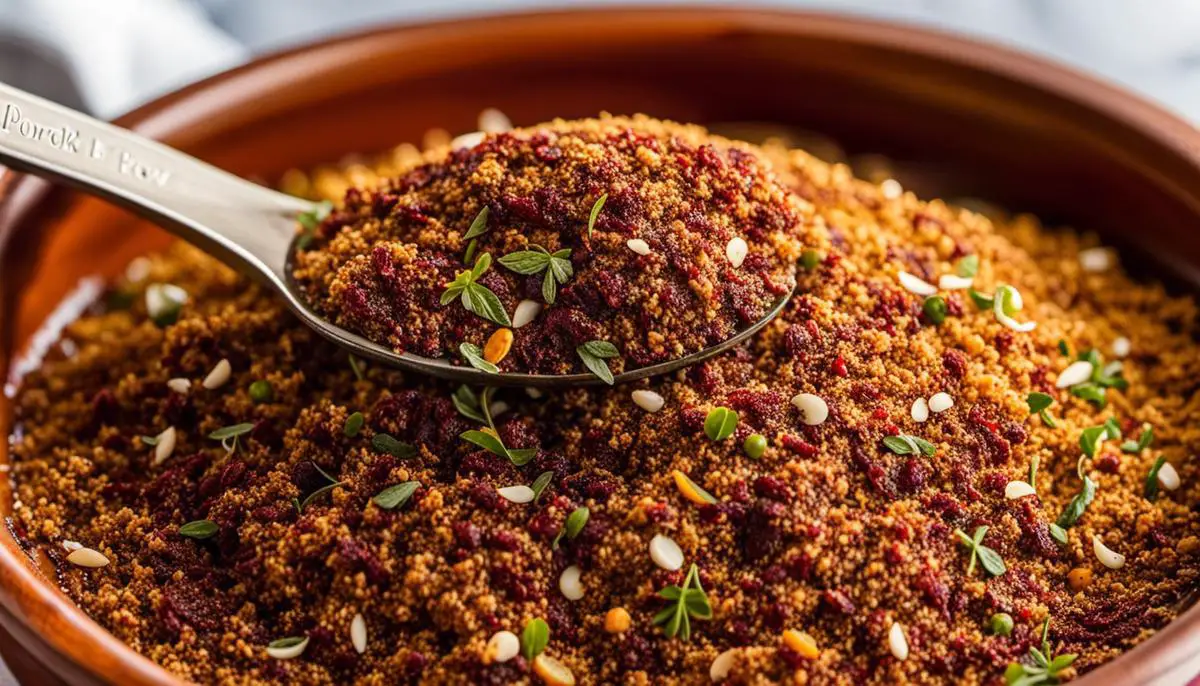
Making the Rub
Choosing Your Ingredients
Creating a delicious pork rub begins with the selection of the right ingredients. The taste profile typically consists of three major elements: sweet, savory and spicy. Brown sugar or other sweeteners contribute the sweet component, herbs and spices like garlic, onion powder, cumin, and coriander provide the savory, while chili powder, cayenne pepper, or paprika adds the spice. Additionally, incorporating salt helps to accentuate these flavors and makes them more prominent.
Blending and Balancing Flavors
Once all the ingredients are prepared, the next step is skillfully blending and balancing these flavors. The harmony of sweet, savory, and spicy creates that signature flavor depth of a fantastic pork rub. Start with a ratio of 1:1:1 of sweet, savory, and spicy ingredients, then adjust to your personal preference. For example, if you want a sweeter rub, increase the amount of brown sugar. Likewise, for a spicier rub, add more chili or cayenne pepper.
Adjusting Measurements
Adjusting measurements will ensure your pork rub has the right ratio of all the flavors. Too much of one ingredient could overpower the rest, leading to a less satisfying flavor balance. It’s important to begin with small amounts, particularly with potent spices. Taste the rub after each ingredient adjustment to keep a check on the flavor balance.
Making the Rub
Combine all your ingredients in a bowl and mix until well blended. Ensure the sugar is completely distributed and there no clumps are left. This will help ensure an even application on your pork.
Storing Your Rub
Storing your pork rub properly will maintain its freshness and quality. Place the rub in an airtight container or Ziploc bag. Store it in a cool, dry area, away from direct sunlight. If stored properly, a pork rub can remain fresh for up to a year.
Using the Rub
When you are ready to cook, apply the rub liberally to your pork. Make sure it’s evenly coated all over, and then let it sit for a few hours or overnight to let the flavors really penetrate the meat. Then, it’s grill or oven time!
Remember, mastery in making a good pork rub comes from practice and the willingness to experiment with different flavors. So, don’t be afraid to customize your rub to suit your taste buds.

Application and Cooking
Applying the Pork Rub
Once you’ve made your pork rub, it’s time to apply it to the meat. Start by patting dry your pork with paper towels to remove any excess moisture. This way, the rub will stick better to the surface of the meat and infuse more flavor.
Next you’ll want to apply the pork rub. For every pound of meat, you should use about one tablespoon of rub. Keep in mind that less is more when it comes to rubs – too much can overload and mask the natural flavors of the meat. Use your hands to cover every inch of the meat, massaging the rub gently into the surface.
Don’t forget to apply rub to the sides and any crevices in the meat. If the pork has a fat cap, make sure to apply the rub there too for added flavor. Once you’ve applied your rub, let the pork sit for at least 30 minutes before cooking. This allows time for the meat to absorb the flavors from the rub.
Cooking the Pork
When it comes to actually cooking your pork, it’s important to remember that low and slow is key. You want to cook your pork at a low temperature for a long time to allow the flavors from the rub to permeate the meat.
Generally, a good rule of thumb is to cook your pork at about 225 degrees Fahrenheit for anywhere from 2 to 4 hours, depending on the size of the piece. If you’re using a meat thermometer, the internal temperature should get to around 145 degrees Fahrenheit for safe eating.
Don’t forget to let the pork rest after removing it from the heat. This allows the juices to redistribute throughout the meat, making it juicier and more flavorful. Depending on the size of your pork, let it rest for 10 to 20 minutes before slicing and serving.
Remember
The most effective way to taste the seasoning of a rub is on the finished product. After all your hard work, don’t be shy about devouring your deliciously rubbed and perfectly cooked pork!
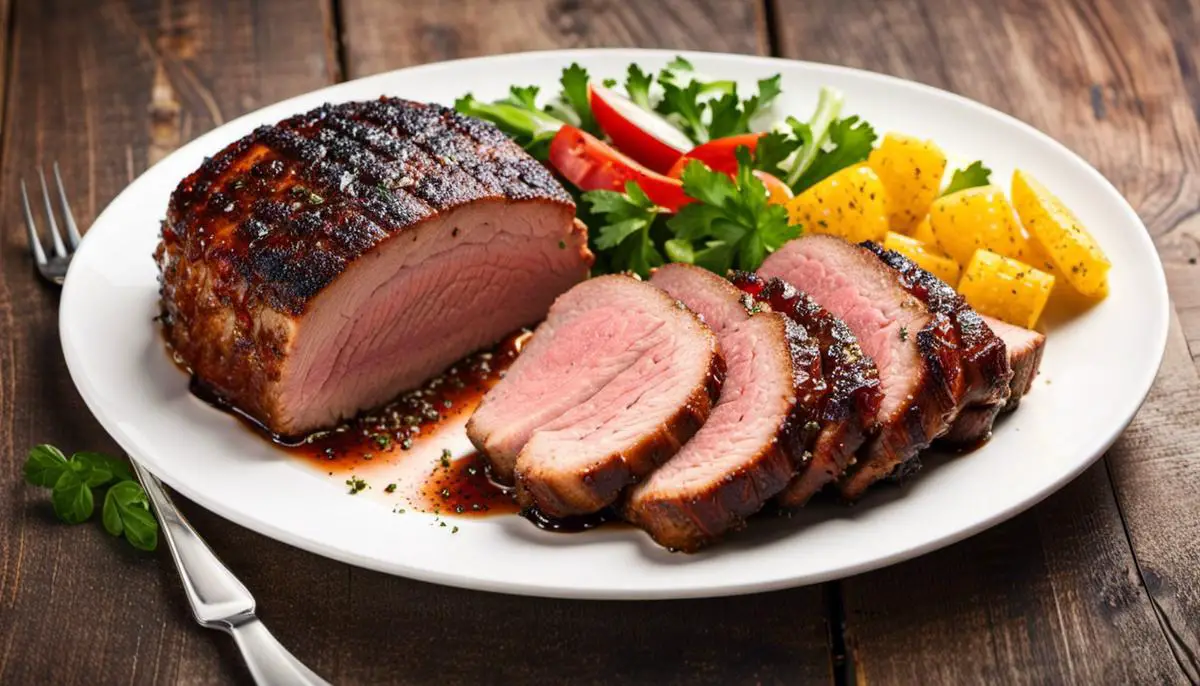
As your kitchen fills with the tantalizing aromas of a beautifully rubbed and roasting pork, take a moment to reflect on the knowledge you’ve gained. From comprehending the rudimentary elements of a pork rub to picking out a combination of ingredients that pleases your palate, creating an ideally balanced blend, and finally, mastering the art of evenly spreading the rub for a sublime flavor infusion, you’re now equipped to take your pork dishes to a new level of delectability. The joy of home cooking lies not only in the delightful dishes you create but also in the process of learning, experimenting, and finally mastering techniques such as making a perfect pork rub.
